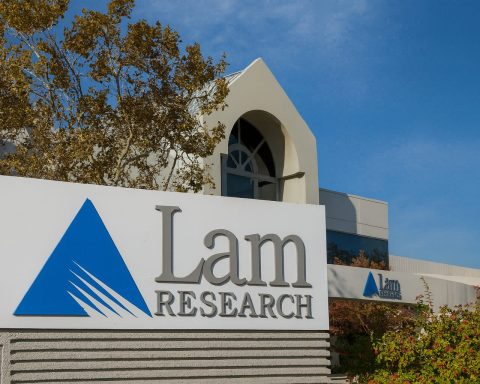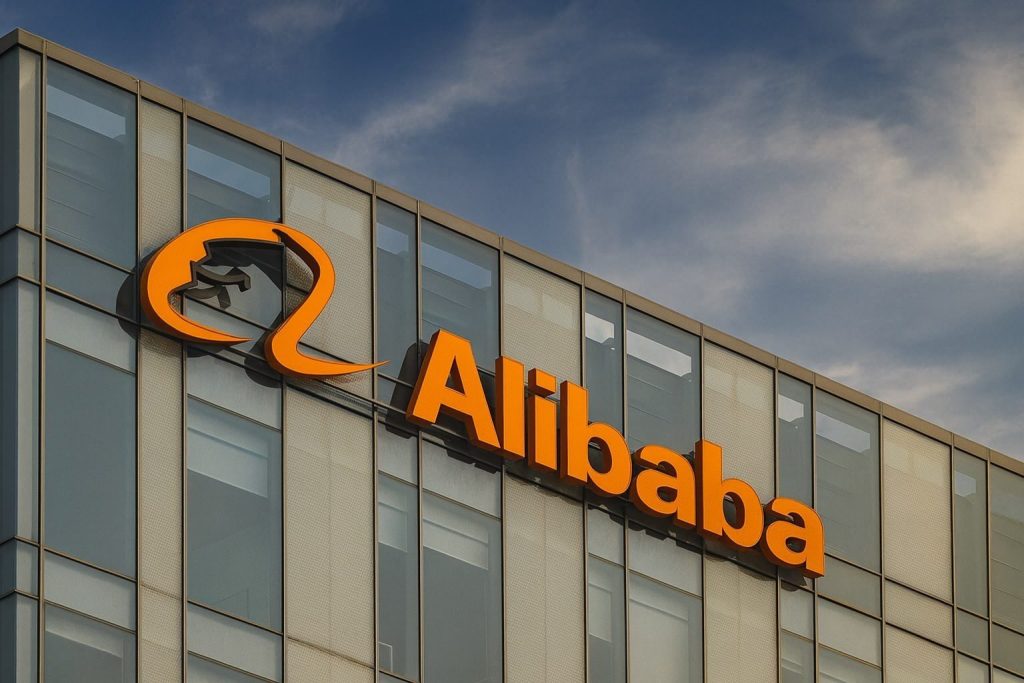Published: November 25, 2025
Broadcom’s stock has exploded back into the AI spotlight after an 11% jump tied to Alphabet’s surging artificial intelligence ambitions. The move has turned AVGO into one of the hottest mega‑cap names of late 2025 and lit a fire under a broader group of Alphabet‑linked AI suppliers.
Here’s a breakdown of what happened, what’s new today, and what it could mean for investors watching the AI trade.
1. What just happened to Broadcom and Alphabet?
On Monday, November 24, Broadcom (NASDAQ: AVGO) surged roughly 10–11%, marking its best session since April and making it the top performer in the S&P 500. [1]
- AVGO is now up about 60% year to date and has more than doubled over the past year, trading around the high‑$370s to $380 range. [2]
- Alphabet (NASDAQ: GOOGL) jumped about 6% on Monday and has gained roughly 67–68% in 2025, adding around $1.5 trillion in market value and pushing its market cap close to $4 trillion. [3]
The immediate catalyst: Google’s Gemini 3 AI model and its custom TPU (tensor processing unit) chips, which have dramatically shifted sentiment about Google’s role in the AI race and, by extension, about its key hardware partners like Broadcom. [4]
At the index level, Monday’s move powered:
- The Nasdaq Composite to its best day since May, up roughly 2.7%. [5]
- The S&P 500 to a gain of around 1.5–1.6% to kick off the holiday‑shortened Thanksgiving week, helped by renewed expectations of a Federal Reserve rate cut in December. [6]
2. Why is Broadcom suddenly the star of the AI hardware trade?
A. Google’s exclusive ASIC partner
The core of the story is Broadcom’s multi‑year role as Google’s exclusive partner for custom AI chips:
- Broadcom designs and manufactures the TPU ASICs that power Google’s AI infrastructure, a partnership that dates back to 2016 and is now in its seventh generation of chips. [7]
- These custom chips are tuned for AI workloads and compete with Nvidia GPUs in Google’s internal data centers.
Analysts describe Broadcom as a “derivative play” on Google’s AI dominance: if Google’s Gemini and TPU strategy win, Broadcom’s AI revenue should scale as well. [8]
B. Gemini 3 and an “inflection point” in AI demand
Recent commentary and research notes highlight a dramatic jump in Google’s AI workload:
- Google’s token processing volume reportedly rose from about 480 trillion tokens in April to around 1,300 trillion in October, nearly a 3x increase in eight months. [9]
- Much of this is tied to Gemini 3 and new AI agent platforms running on TPUs, which demand enormous compute capacity. [10]
Analysts at firms including Jefferies, Melius Research and Wedbush have framed this as an “inflection point” for custom AI chips, pushing price targets for AVGO into the $475–$480 range – implying roughly 40% upside from Monday’s pre‑rally levels. [11]
C. Today’s deeper analysis: can AVGO really go to $700?
Fresh research out today digs into just how far Broadcom’s stock might run if the AI thesis plays out:
- Trefis estimates Broadcom generated about $60 billion in trailing 12‑month revenue with 50%+ adjusted net margins – meaning roughly half of each new dollar of revenue drops to the bottom line. [12]
- In one scenario, revenue doubles to $120 billion by 2028, driven primarily by AI chips and ongoing growth at VMware. That could see adjusted EPS roughly double as well. [13]
- If the current premium valuation multiple (around 60x trailing earnings) holds, that math implies a potential share price in the $700+ range over a multi‑year horizon, with even higher levels possible if AI spending is stronger than expected. [14]
That’s not a forecast or guarantee—but it explains why investors are suddenly willing to pay such a rich multiple for AVGO.
3. Broadcom rockets onto “best stock” lists
The rally isn’t just about one big day; it’s reshaping the stock’s profile across key investor screens.
An Investor’s Business Daily piece published late Monday—“Broadcom Surges 11%, Leads 26 Hot Newcomers Onto Best Stock Lists”—notes that AVGO is now leading a wave of 26 new additions to IBD’s top‑rated stock lists. [15]
Key points from that coverage:
- AVGO’s earnings strength and relative strength ratings now put it at the top of many growth‑stock filters. [16]
- Other names joining the lists include additional AI‑linked plays such as engineering and infrastructure firms that benefit from data‑center build‑outs, underscoring how broad the AI trade has become. [17]
For traders and portfolio managers who rely on these curated lists, Broadcom’s appearance across multiple categories is a powerful technical and sentiment signal.
4. Alphabet’s AI comeback: near $4 trillion and counting
The other half of the story is Alphabet itself.
A. Gemini 3 reshapes the AI narrative
Alphabet’s Gemini 3 model has received strong early reviews for its performance in a range of tasks compared with leading offerings from OpenAI and Anthropic. That has:
- Recast Alphabet as a front‑runner rather than a laggard in the AI race. [18]
- Triggered a rotation out of previous AI darlings like Microsoft and Nvidia into Alphabet, according to trading desk commentary. [19]
Alphabet has also unveiled Ironwood, its latest and most efficient TPU generation, reinforcing the idea that Google is not just buying chips from others—it is becoming a chip platform of its own. [20]
B. A new twist: Meta may use Google’s TPUs
A separate MarketWatch report today adds a new wrinkle: Meta is reportedly considering using Google’s TPUs in its data centers, potentially in a deal worth billions. [21]
If that happens, it would:
- Make Alphabet not just a cloud and AI competitor, but also a chip supplier to rival platforms.
- Increase demand for TPUs—and therefore for Broadcom’s custom ASIC work—beyond Google’s own footprint. [22]
- Put more pressure on Nvidia and AMD, which both saw their stocks dip in after‑hours trading on concerns about new competition in AI infrastructure. [23]
The prospect of Alphabet selling TPUs externally is one of the most important new developments of November 25 and a key reason today’s AI‑hardware rally looks different from earlier phases of the AI trade.
5. Celestica, Lumentum and other Alphabet suppliers ride the wave
Broadcom isn’t the only winner. Investors are increasingly looking for “picks and shovels” plays on Alphabet’s AI build‑out.
Celestica (CLS): 800G switch specialist
- Shares of Celestica jumped roughly 13–15% on Monday, according to MarketWatch and other outlets. [24]
- Analysts point to surging demand for its 800G data‑center switches, which are built using Broadcom’s Tomahawk 5 networking silicon and are designed specifically for AI and high‑performance computing clusters. [25]
These ultra‑fast switches are critical for feeding data to massive AI models. As Alphabet and other hyperscalers build larger clusters, demand for 800G and, eventually, 1.6T networking is expected to grow rapidly. [26]
Lumentum (LITE): optical backbone for AI
- Lumentum Holdings gained nearly 15–17% Monday as traders bet on its role in supplying optical components for AI data centers. [27]
- The company produces high‑speed optical and photonic products—including 400G, 800G, and 1.6T modules—that move data between racks and across data centers, a crucial piece of AI infrastructure. [28]
Market commentary today frames Celestica and Lumentum as new front‑line beneficiaries of Alphabet’s AI capex, alongside Broadcom. [29]
6. The broader market context: AI trade 2.0?
Monday’s AI‑led bounce is being described as a “second wave” of the AI trade:
- Unlike the first phase—dominated by Nvidia, Microsoft, and a handful of early AI winners—this wave is centered on Alphabet and its ecosystem of custom‑chip and networking suppliers. [30]
- Research desks note that small‑cap stocks and healthcare ETFs also joined the rally, helped by expectations of a December Fed rate cut, adding a macro tailwind to the tech surge. [31]
Historical data cited by MarketWatch suggests that strong Monday performances in Thanksgiving week often lead to further gains later in the week, though that’s far from guaranteed. [32]
7. Key risks investors are watching
Today’s bullish narrative comes with real risks, many flagged in new research notes:
- Customer concentration
Broadcom’s AI revenue is heavily tied to a small number of hyperscalers, with Google still the dominant ASIC customer. Any slowdown in Alphabet’s AI spending—or a shift to more in‑house chip design—would hit AVGO’s growth trajectory hard. [33] - Rising competition in custom silicon
Rivals like Marvell are pushing into custom accelerators, while every major cloud player invests in its own chip design teams. Nvidia isn’t standing still either. Any sign that Broadcom is losing share or pricing power in custom silicon or AI networking could compress its premium valuation. [34] - Valuation and volatility
At more than 60x trailing earnings and after a 60% YTD run, Broadcom is priced for continued flawless execution. Historically, the stock has seen drawdowns of 30–50% during tech corrections, and Trefis notes that it has tended to fall harder than the S&P 500 in major sell‑offs. [35] - Macro and rate risk
Monday’s rally is partly built on renewed confidence in a December Fed rate cut. If inflation data or Fed commentary flips that narrative, high‑multiple AI names like AVGO, CLS and LITE could be among the first to feel the pressure. [36]
8. What today (November 25, 2025) adds to the story
Putting all of today’s coverage together, several new themes emerge:
- Broadcom is no longer just “another chip stock” – it is being reframed as a core AI infrastructure platform, with both custom silicon and networking scale, plus VMware’s recurring software revenue as a stabilizer. [37]
- Alphabet has clearly reclaimed a leadership role in AI, reflected in a near‑$4 trillion valuation, double‑digit stock move, and the prospect of selling TPUs to third parties like Meta. [38]
- The AI supply chain is broadening: investors are actively hunting for hardware “picks and shovels” beyond Nvidia, including 800G switch makers such as Celestica and optical‑networking specialists like Lumentum. [39]
- There is a clear rotation within the AI trade, with money flowing from earlier winners like Nvidia and Microsoft into Alphabet and its suppliers, at least for now. [40]
For investors, the takeaway isn’t that these stocks are guaranteed to keep rising, but that the center of gravity in AI hardware is shifting—and markets are rapidly repricing the companies sitting closest to Alphabet’s AI stack.
Important note: This article is for informational and news purposes only and does not constitute investment advice. Always do your own research or consult a licensed financial adviser before making investment decisions.
References
1. coincentral.com, 2. www.trefis.com, 3. www.marketwatch.com, 4. www.marketwatch.com, 5. www.investopedia.com, 6. www.investopedia.com, 7. www.techbuzz.ai, 8. coincentral.com, 9. www.techbuzz.ai, 10. www.techbuzz.ai, 11. coincentral.com, 12. www.trefis.com, 13. www.trefis.com, 14. www.trefis.com, 15. www.investors.com, 16. www.investors.com, 17. www.investors.com, 18. www.marketwatch.com, 19. m.au.investing.com, 20. www.marketwatch.com, 21. www.marketwatch.com, 22. www.marketwatch.com, 23. www.marketwatch.com, 24. www.marketwatch.com, 25. www.celestica.com, 26. cignal.ai, 27. www.marketwatch.com, 28. www.lumentum.com, 29. www.marketwatch.com, 30. www.marketwatch.com, 31. www.investopedia.com, 32. www.marketwatch.com, 33. www.trefis.com, 34. www.trefis.com, 35. www.trefis.com, 36. www.investopedia.com, 37. www.trefis.com, 38. www.marketwatch.com, 39. www.marketwatch.com, 40. m.au.investing.com







